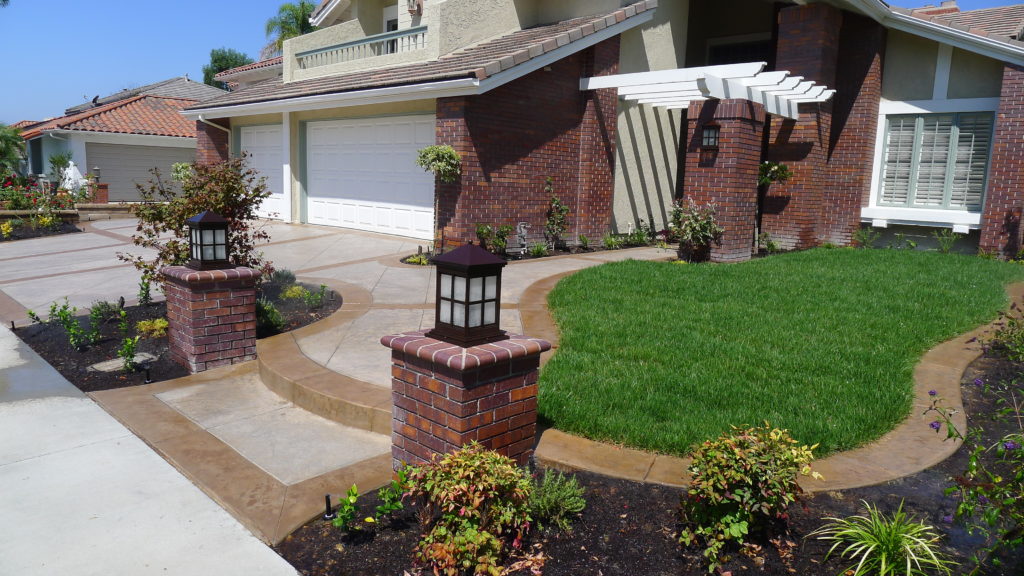
Key Takeaways:
Across Orange County, families are rethinking their yards. Instead of maintaining thirsty lawns, many now choose edible landscaping Orange County projects that provide both beauty and nutrition. This trend brings together sustainability, style, and health.
Edible landscapes may feature fruit trees, vegetable beds, or herbs tucked into flower borders. With expert landscaping services, these designs also add value and curb appeal while lowering grocery bills.
Several key ideas are shaping the way homeowners approach edible design:
These approaches work in both large yards and compact spaces, proving that edible landscapes are accessible to everyone.
At the heart of edible landscaping are harvest gardens. These gardens highlight seasonal produce that thrives in Orange County’s climate. Tomatoes, peppers, and cucumbers thrive in warm months, while kale, spinach, and carrots shine in cooler seasons.
By rotating crops and mixing in flowers, harvest gardens not only produce food but also attract pollinators. Adding ground covers like clover or creeping thyme helps retain moisture, prevent weeds, and keep soil healthy.
While harvest gardens focus on seasonal bounty, food forest design takes a broader view. This concept mimics woodland ecosystems by layering plants—trees, shrubs, vines, and ground-level crops. The result is a resilient, self-sustaining system.
A food forest may start with fruit trees like citrus or avocado, underplanted with berry bushes, herbs, and perennial vegetables. The diversity reduces pests, improves soil health, and ensures consistent yields. With careful planning, food forests provide both food and beauty for years with minimal inputs.
Many homeowners worry that edible gardens will look messy. The solution is blending edible plants with ornamentals for a balanced look. Colorful Swiss chard doubles as a striking foliage plant. Lavender, rosemary, and sage add fragrance, flowers, and flavor.
By mixing edibles with decorative plants, homeowners create yards that are as attractive as they are productive. This style reflects the growing interest in educational landscapes, where families teach children about food cycles and sustainability through everyday gardening.
Orange County’s climate makes water a concern. That’s why edible gardens often integrate drought-tolerant practices. Pairing harvest beds with xeriscaping ensures landscapes stay lush while using less water. Gravel paths, mulch, and drip irrigation reduce waste while keeping plants healthy.
Fall is also the ideal time to install new edible gardens. With mild weather and soil still warm, roots establish quickly. Our guide on the fall planting season explains why this timing is perfect for long-term success.
One challenge with edible landscaping is upkeep. Balancing high-yield harvest beds with low-maintenance plants helps homeowners avoid burnout. Hardy shrubs, perennial herbs, and native plants provide structure while requiring little attention.
This balance ensures landscapes remain functional and attractive, even when families get busy. Homeowners enjoy consistent yields without constant weeding or watering.
Hardscaping gives edible gardens structure and style. Raised beds, stone pathways, and trellises organize planting zones while adding long-term value. Retaining walls also create terraces for vegetable beds, improving drainage and soil depth.
Patios and seating areas make harvest gardens more inviting, encouraging families to spend time outdoors. Integrating hardscape with edible plants creates both function and beauty.
Successful edible gardens rely on pollinators. Planting native wildflowers, fruiting shrubs, and flowering herbs ensures bees and butterflies thrive. These plantings support biodiversity while improving harvest yields.
Native plants also reduce maintenance by adapting naturally to Orange County’s soil and climate. Blending them with edibles creates a resilient, eco-friendly design.
For homeowners considering edible landscapes:
Working with professionals helps homeowners select the best plants, irrigation systems, and layouts for their specific property.
Edible landscapes aren’t just about food—they’re about connection. Families bond while planting, watering, and harvesting together. Communities with harvest gardens share produce, reduce food waste, and strengthen neighborhood ties.
Schools and homeschooling families also use edible landscapes as outdoor classrooms. These gardens teach science, nutrition, and responsibility, providing hands-on learning opportunities that stick with children for life.
By combining edible landscaping in Orange County with modern design, homeowners create spaces that nourish both people and the planet. Whether you’re experimenting with harvest gardens or planning a full food forest design, the results go beyond beauty—they build healthier lifestyles and communities.
Ready to grow food and beauty in the same space? From harvest gardens to long-term food forest design, Signature Landscape helps Orange County families bring edible landscapes to life. With expertise in ground covers, water-wise planting, and seasonal design, our team creates yards that produce year after year.
With over 38 years of experience, Signature Landscape transforms properties into productive and stylish landscapes. From low-maintenance planting ideas to seasonal strategies, we guide every step. Ready to start your project? Request your free quote today and begin your edible landscaping journey.
 Signature Landscape
Signature LandscapeSchedule A Consultation